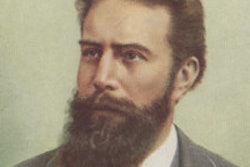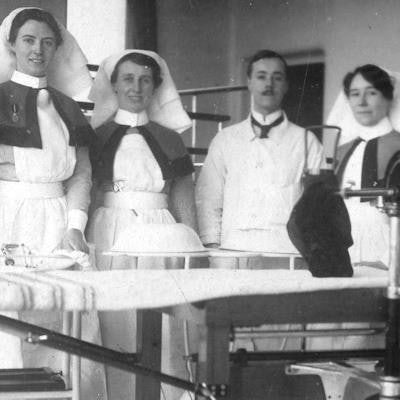
I always find it interesting when newspapers and magazines reproduce content from their past, and the Times of London is no exception, particularly when it reproduced a piece on 24 March 2021 that was published on that day in 1921.
 Newspaper report of the death of Ironside Bruce.
Newspaper report of the death of Ironside Bruce.The segment in the Times was about the then-recent death of the radiologist Dr. Ironside Bruce of Charing Cross Hospital. William Ironside Bruce (1876-1921) was one of the brightest of his generation, and his premature death from radiation was a great shock to all.
It was because of the difficulties in image interpretation, even of the normal, that many radiographic atlases were published as the 20th century progressed. In 1907 Bruce published his System of Radiography with an Atlas of the Normal. The early atlases showed the two-dimensional x-ray images and showed that the three-dimensional structure of the body was quite difficult to appreciate. This book was very influential, and it was an early attempt at standardization of radiographic technique.
Bruce realized that many radiographs were valueless because not enough attention was paid to the relationship between the x‑ray tube and the part to be examined. At that time, the only guide to technique was the individual practitioner's own experience. Bruce realized that if the normal was to be used as a comparison with the abnormal, then the same radiographic technique needed to be used for both. He therefore illustrated his book with illustrations of technique and with normal radiographs.
It was following the shock at his death in 1921 that the British X‑ray and Radium Protection Committee came into being, and was the first of such organizations. The first generation of radiologists had commonly developed radiation dermatitis often followed by radiation-induced malignancy.
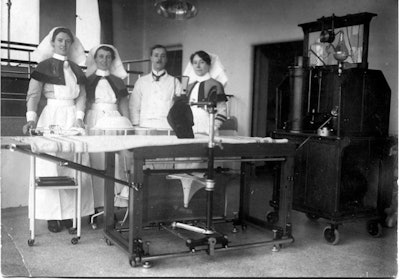 Mobile x-ray unit with Ironside Bruce and nursing staff during World War I.
Mobile x-ray unit with Ironside Bruce and nursing staff during World War I.Bruce died of aplastic anemia, as was more common with the radiation deaths of that later period. This was partly related to the higher power of the x-ray equipment. With a passionate voice, the writer of his obituary exclaimed that "Surely some steps, and those not feeble and indefinite, ought to be taken by those of us who are left, in an endeavour to check this appalling loss of life, to say nothing of the loss of health and maiming and disfiguring of X-ray workers."
There were many reports in the 1920s of victims of radiation exposure and the general public was becoming very concerned. The British X-ray and Radium Protection Committee was active from 1921 to 1952. The committee recognized three sources of danger to x-ray workers: being exposed to radiation, electrical risks from exposed cables in these preshockproof days, and toxic gasses from corona discharges. In spite of a limited knowledge of radiobiology, the committee defined a series of pragmatically reasonable precautions.
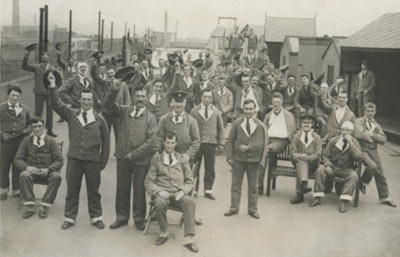 Patient rehabilitation was an essential part of hospital life from 1914. This photo was taken at London's King George Hospital.
Patient rehabilitation was an essential part of hospital life from 1914. This photo was taken at London's King George Hospital.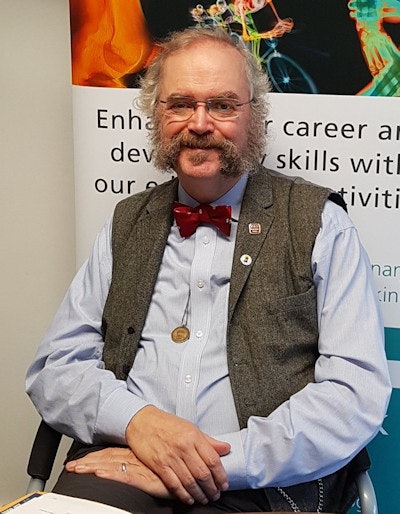 Dr. Adrian Thomas. Image courtesy of the BIR.
Dr. Adrian Thomas. Image courtesy of the BIR.Developments were also taking place in other countries and, as an example, the Safety Committee of the American Roentgen Ray Society made its recommendations in 1922. Significant progress was made in radiation protection in the next two decades, as Bo Lindell recounts.
An International Commission on Radiological Protection was conceived at the First International Congress of Radiology (ICR) that was held in London in 1925. Discussions took place on both x-ray and radium protection and the reasonable and achievable recommendations have been summarized by Kaye. The sacrifice of Ironside Bruce was not in vain.
Further reading
- Kaye GWC. X-ray protective measures. Br J Radiol. Röntgen Society Section. 1927;23(91):155-163.
- Lindell B. ICRP 1928-1978. Radiological Protection Bulletin. 1978;24:5-9.
Dr. Adrian Thomas is chairman of the International Society for the History of Radiology and honorary historian at the British Institute of Radiology.
The comments and observations expressed herein do not necessarily reflect the opinions of AuntMinnieEurope.com, nor should they be construed as an endorsement or admonishment of any particular vendor, analyst, industry consultant, or consulting group.





